Moroccan-style Spicy Mutton Stew
This Spicy Mutton Stew is inspired by the tagines of Morocco, but I’ve resisted the urge to call it a tagine. As you’re probably aware, that name comes from the conical pot it’s traditionally slow-cooked in. However, my spicy mutton stew isn’t cooked in a tagine and, you might be surprised to learn, it’s not slow-cooked either.
Whatever you want to call it, there’s no doubt spicy mutton stew is delicious. Chunks of rich mutton in a spicy, warming rather than hot sauce, enlivened with the tang of lemon and slightly sweet from pitted prunes and pomegranate molasses. Fried almonds and sesame seeds on top give the dish a satisfying crunch.
Served with lots of fresh, vegetable-based accompaniments, this stew is a wonderful treat that should tempt anyone, even those a little wary of mutton.
Jump to Recipe
What’s the difference between mutton and lamb?
Mutton comes from sheep which are older than those slaughtered for lamb. Most lamb in Britain is from animals only four to six months old. Sheep slaughtered for mutton will be at least two years old. In-between is hogget which is from one-year old animals.
As in many things, maturity brings flavour and that’s what you get with mutton. I’ve heard some people describe it as ‘gamey’ but I don’t think that’s entirely correct. Mutton has a full, meaty flavour, yes,. But I don’t get that pungent flavour associated with strong game.
But mutton is not that popular in the UK. For many years the only place I could get it, when I lived in Leicester, was from halal butchers. On request, they’d mince up chunks of meat, half lamb and half mutton, which I’d make into a wonderful shepherd’s pie.
Now, with the surge in farmers markets and the ability to buy quality meat online, mutton is becoming more available. I’d love to see more people cooking with it and it appearing on lots of restaurant menus. If you can’t find mutton local to you, try Dunwood Farm Butchery who are excellent.
Cook on the stove, in the oven, pressure cook or slow cook? I love the Instant Pot
For all meat stews that would otherwise require long and slow cooking, these days I use an electric pressure cooker, an Instant Pot to be exact.
But if you want to make my recipe you don’t necessarily need one as it can also be made in a slow cooker, a pan on the stove or a casserole in the oven. Just amend the cooking times accordingly and keep an eye on it, if necessary adding more water so the stew doesn’t stick to the bottom of the pot or go dry.
Mutton is a great candidate for pressure cooking or slow cooking and stands up to the rich spicing of this Moroccan-style stew excellently.
Moroccan-style Spicy Mutton Stew
For this recipe, I used two bone-in joints of mutton weighing about 1.2 kg in total. After trimming off excess fat and removing the bones this left a little under 900 grams of meat.
I didn’t throw the bones away though, as they can be added to the stew to give more flavour to the stock and, besides being a shame to waste any part of an animal after it’s been killed for our use, they do make a nice reward for the cook to pick at later.
I used joints as that’s what I happened to have, but you can use boneless chunks or bone-in chunks.
After cutting the meat into pieces about 4 cm square, I dusted them with generous amounts of spices. Cumin, coriander, fennel seeds, paprika, cinnamon, ground ginger, chilli flakes, salt and pepper.
I browned the meat in some olive oil, using the sauté function on my Instant Pot, removed it to a plate then softened chopped onion and sliced garlic in the same oil for about 12 minutes. I returned the meat to the pot, including the juices that had come out.
The rest of the ingredients, apart from any garnish, are all added at once. These include tomato puree, chopped preserved lemon peel (substitute grated lemon zest if you don’t have preserved lemons), pitted prunes, apricots or dates, and a few threads of saffron that have been steeped in hot water.
I add a little sweetener to taste (ideally pomegranate molasses but honey or sugar is fine) plus chicken stock water. Give everything a good stir.
If using an Instant Pot, put the lid on, press the Meat/Stew button which will set the timer automatically to 35 minutes and that’s all you need to do for now. For slow cookers, follow your manufacturer’s instructions. If cooking on the stove or in the oven bring the stew to a boil then simmer gently until the meat is soft and melting (about 1 – 2 hours), making sure the pot doesn’t boil dry by adding more water if necessary.
When the meat is cooked, after checking the seasoning, I’d advise cooling it and putting in the fridge overnight. For Instant Potters, let the pressure release naturally then cool and refrigerate in a suitable container.
The next day, after removing the layer of fat, I gently reheat the stew until piping hot either in a saucepan or 10 minutes on manual in the Instant Pot.
SERVING SPICY MUTTON STEW
To serve, I like to stir in some chopped coriander leaf and garnish it with almonds and sesame seeds that have been browned in a little olive oil, plus more coriander.
Moroccan tagines are traditionally served with couscous, but I prefer the chew of brown basmati rice so served this one with my Rice with Peas, Broad Beans, Griddled Artichoke Hearts & Mint.
Here’s there’s also a green salad and a dollop of my Smoky & Spicy Roasted Sweet Potato Hummus.
All together, I think this makes a fantastic meal.
Moroccan-style Spicy Mutton Stew is proof positive that mutton deserves a place on many more tables in homes and restaurants across Britain.

Moroccan-style Spicy Mutton Stew
Ideally, make the stew the day before you plan to eat it so that you can remove the hardened fat that will have settled on top of the cooled stew.
Ingredients
- 900 g mutton cut into 4cm dice
- 4 tsp ground cumin
- 2 tsp ground coriander
- 1 tsp fennel seeds
- 1 tsp paprika
- 1 tsp cinnamon
- 1 tsp ground ginger
- 1 tsp salt
- 1 tsp ground black pepper
- Few strands saffron
- 1 tbsp olive oil
- 2 medium onions roughly chopped
- 4 cloves garlic thinly sliced
- 1 tbsp tomato puree
- 2 preserved lemons (skin only) finely chopped (alternative: grated zest of 1 lemon)
- 2 tsp pomegranate molasses, honey or sugar
- 300 ml stock or water
- 100 g pitted prunes, apricots or dates roughly chopped
To serve:
- 0.5 tbsp olive oil
- 2 tbsp almonds
- 1 tbsp sesame seeds
- 3 tbsp coriander chopped
Instructions
The day before you plan to eat the stew:
-
Coat the diced mutton in the spices and season with salt and pepper. Set aside.
-
Pour 2 tbs hot water over the saffron threads and set aside.
-
Heat the oil in a pot and brown the mutton. Remove the meat and set aside.
-
Add the onions and garlic to the pot and cook until softening (10-15 min).
-
Put the meat back into the pot along with the rest of the stew ingredients.
-
If using an Instant Pot, put the lid on, switch to 'Sealing' and press the Meat/Stew button. Stew will cook for 35 minutes. Leave pressure to drop naturally.
-
If using a slow cooker, follow the manufacturer's instruction and cook until the meat is soft.
-
If cooking on a stove top or in the oven, bring the stew to a boil, then simmer until the meat is soft (1-2 hours).
-
Taste for seasoning, then leave the stew to cool before refrigerating in a suitable container overnight.
To serve the stew:
-
Remove any hardened fat from the top of the cold stew.
-
Reheat the stew on the stove or in the oven until it is piping hot. If using the Instant Pot, cook on high pressure for 10 minutes.
-
Brown the almonds and sesame seeds in the olive oil.
-
Stir 2 tbsp of coriander into the stew. Sprinkle the remaining 1 tbsp over the top, along with the almonds and sesame seeds.

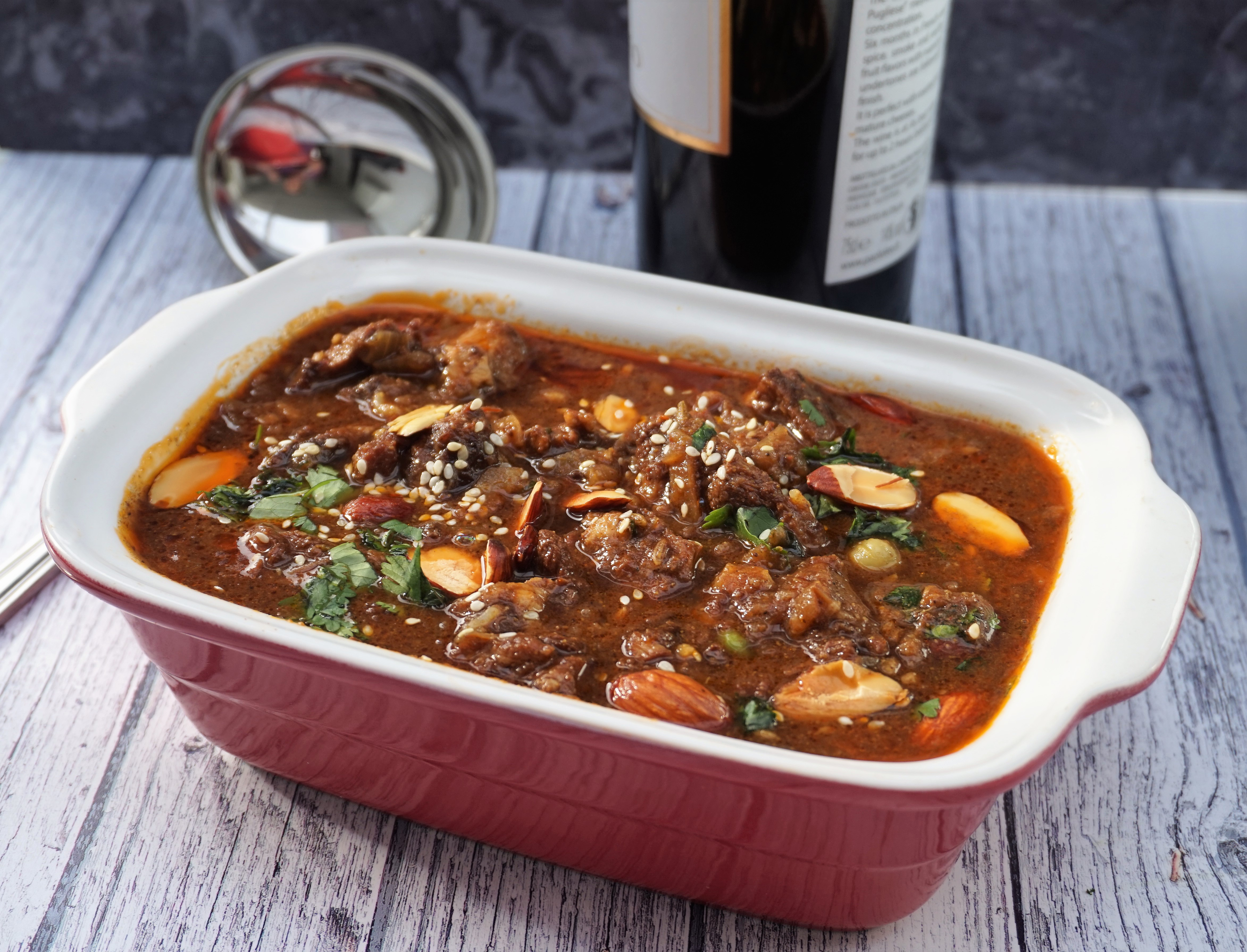
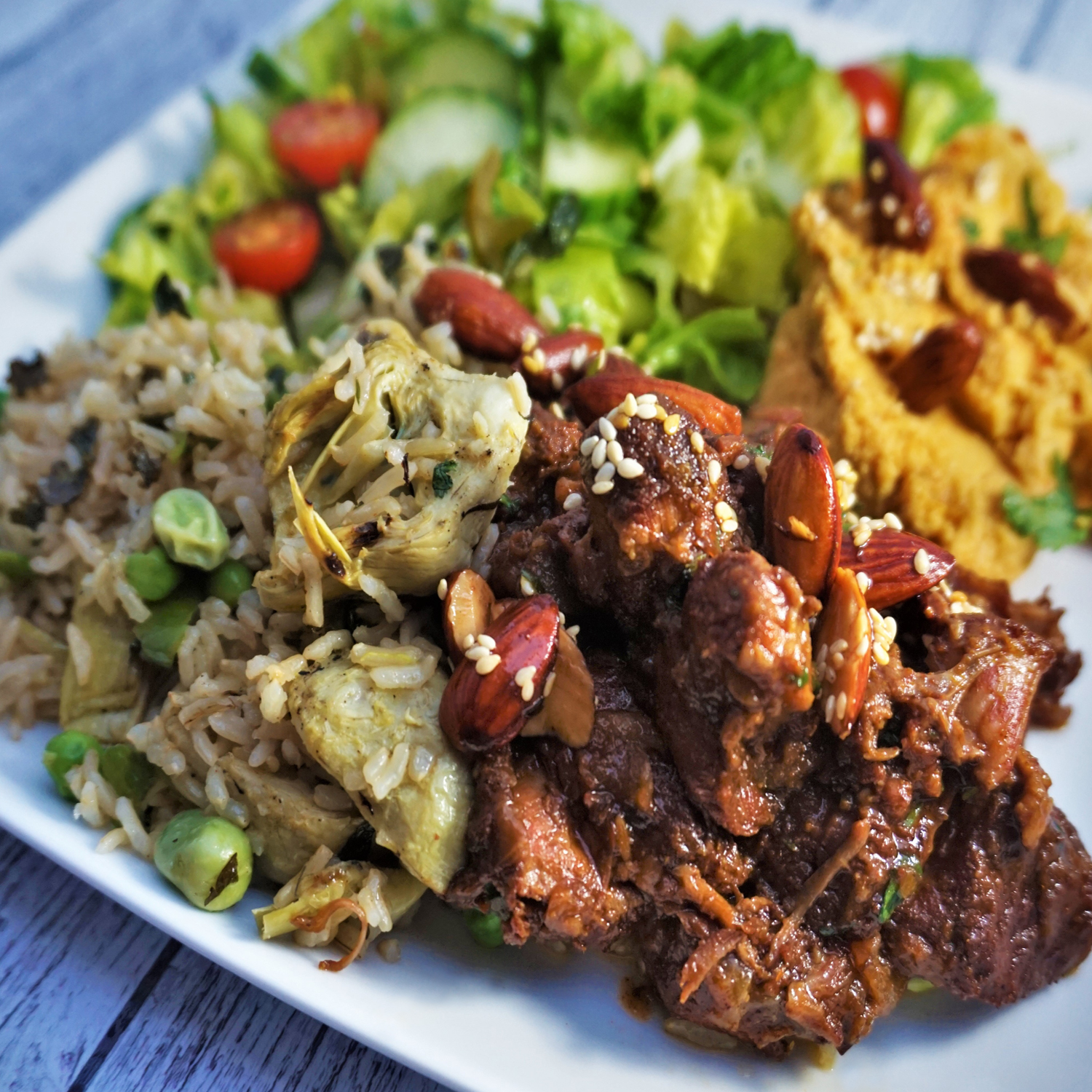
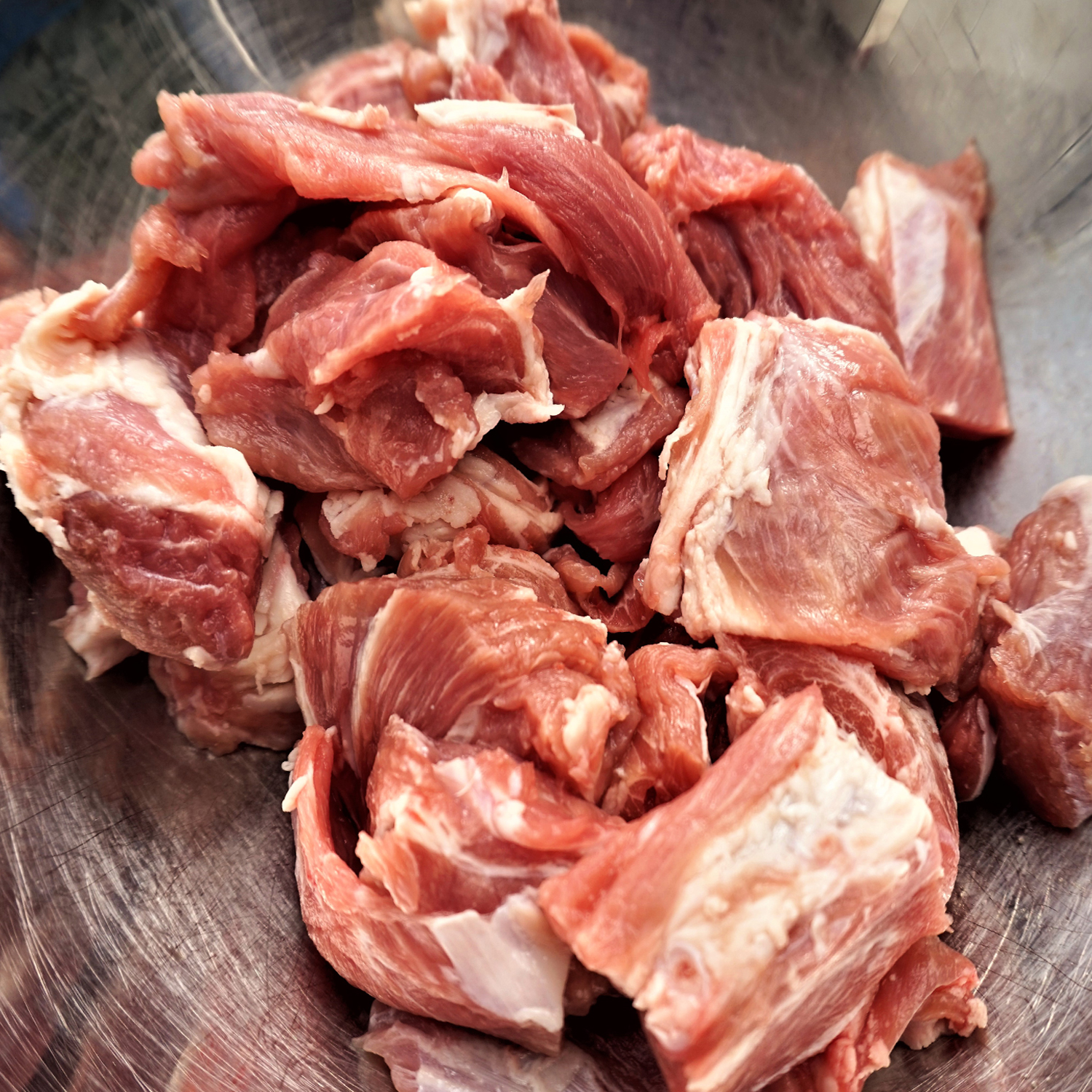
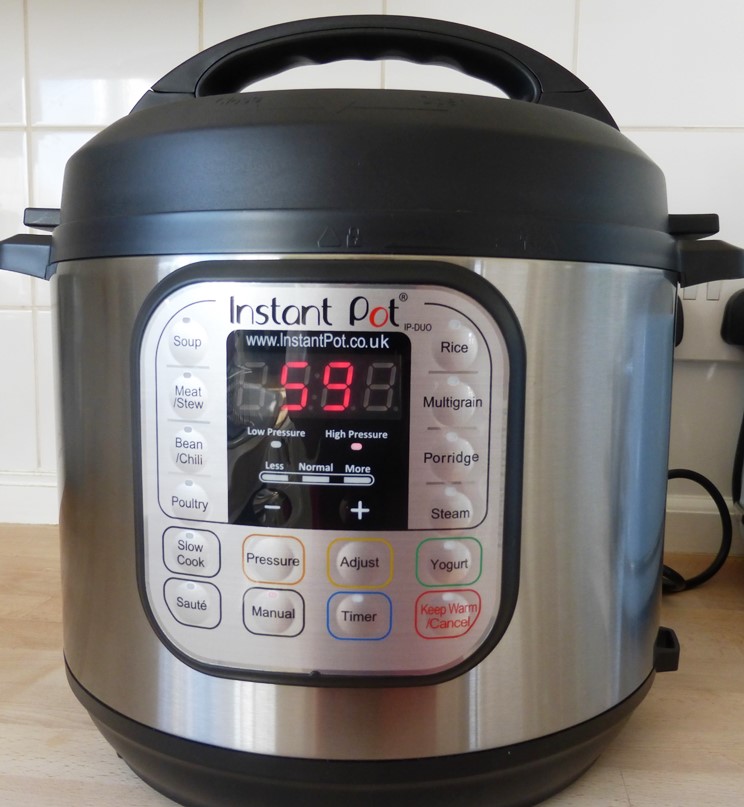
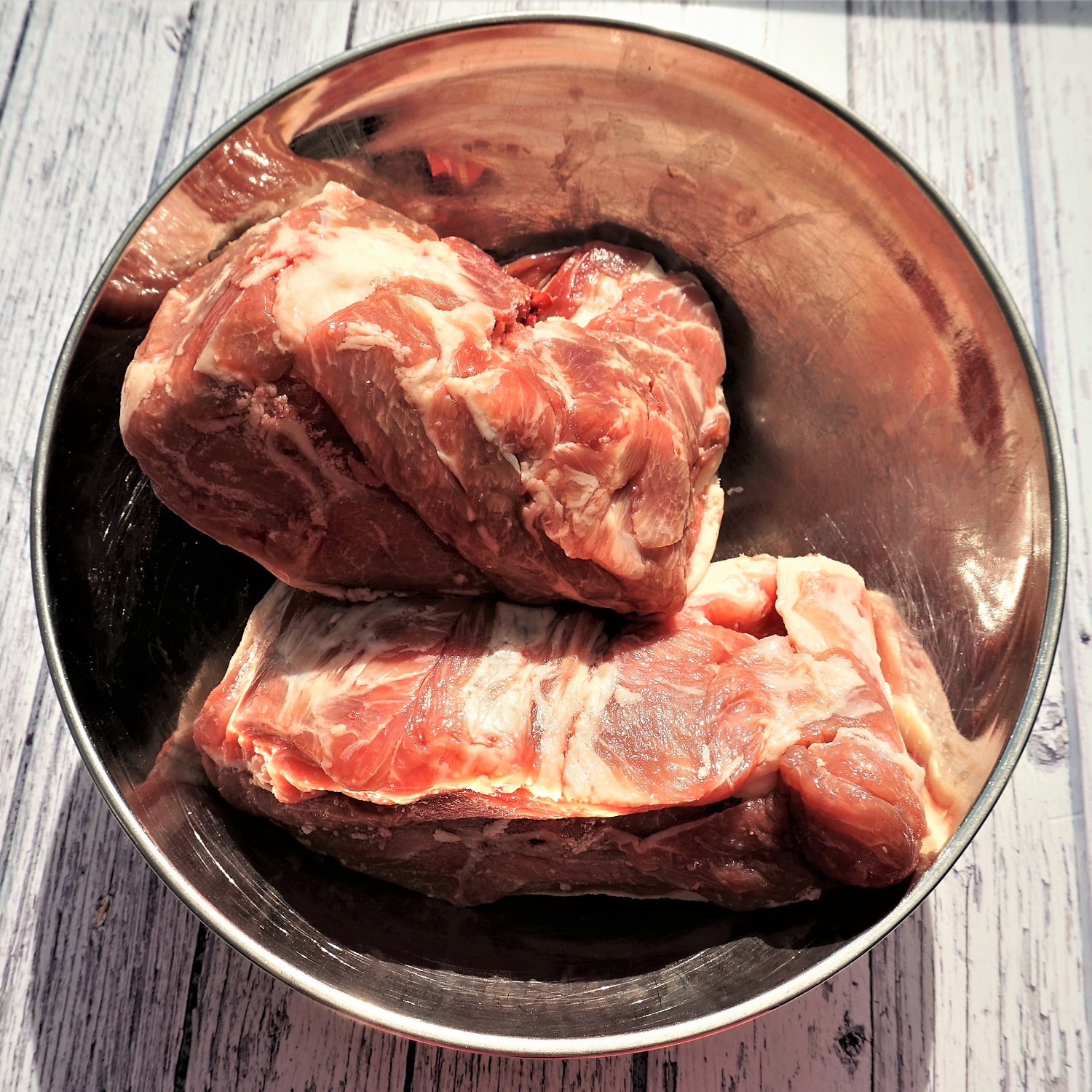
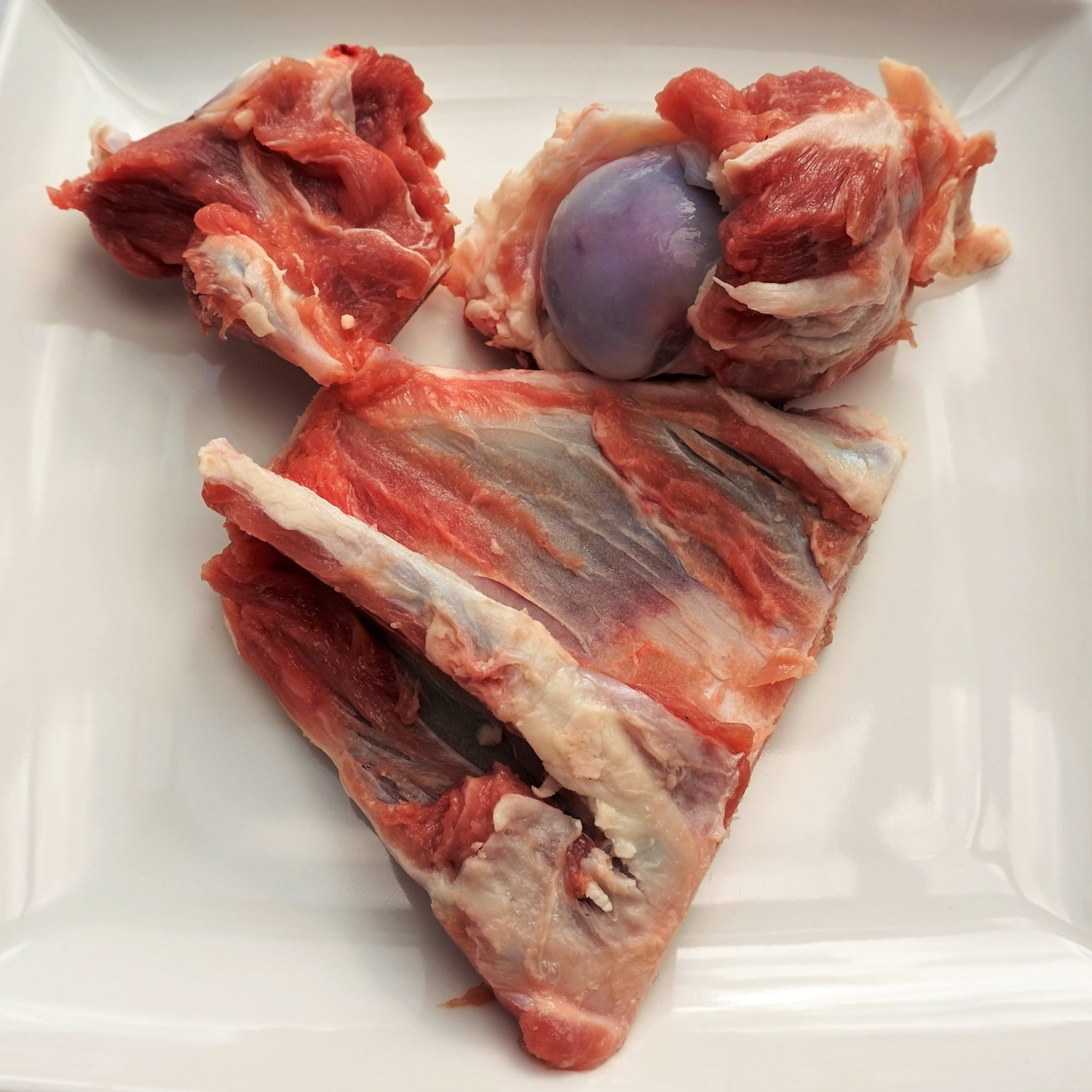
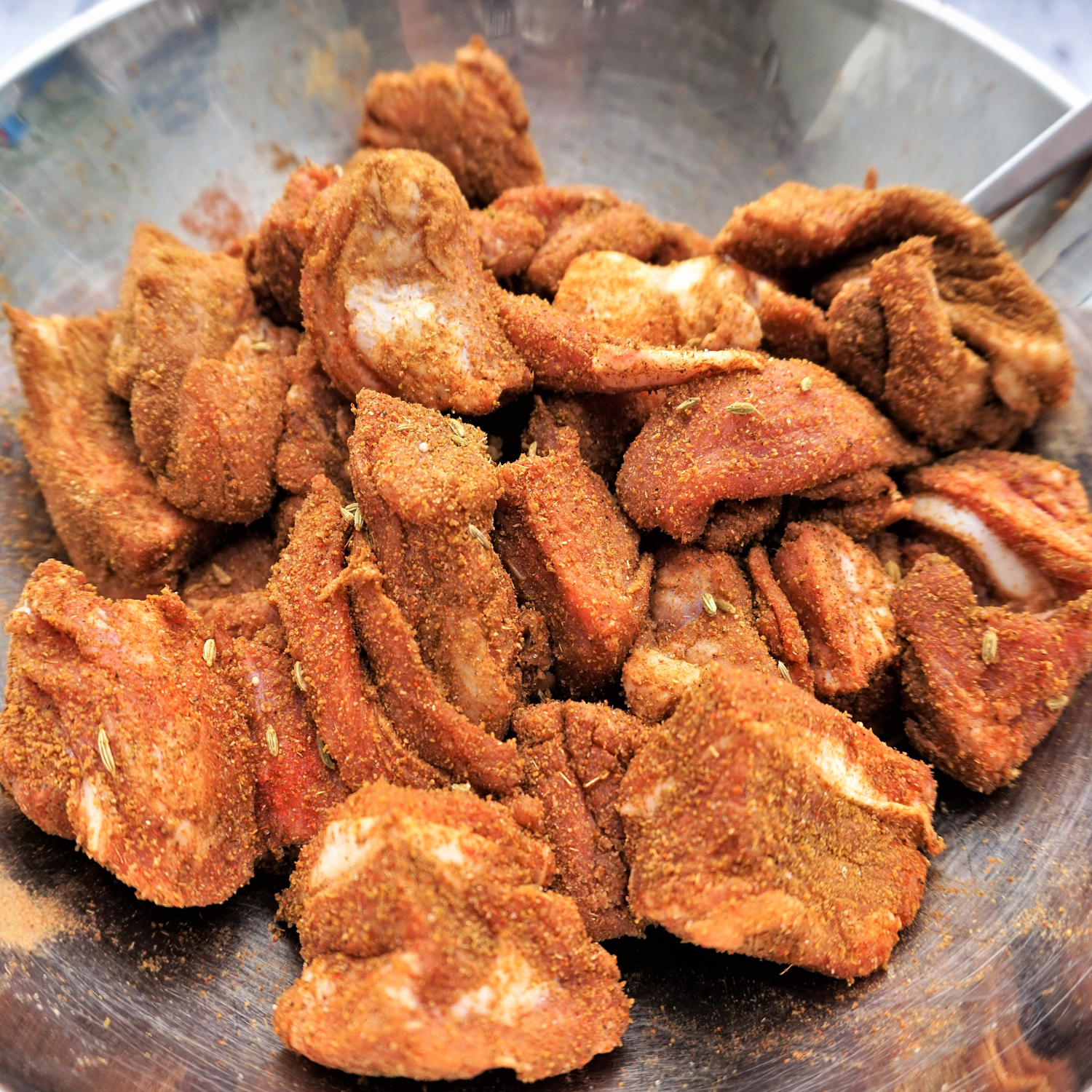
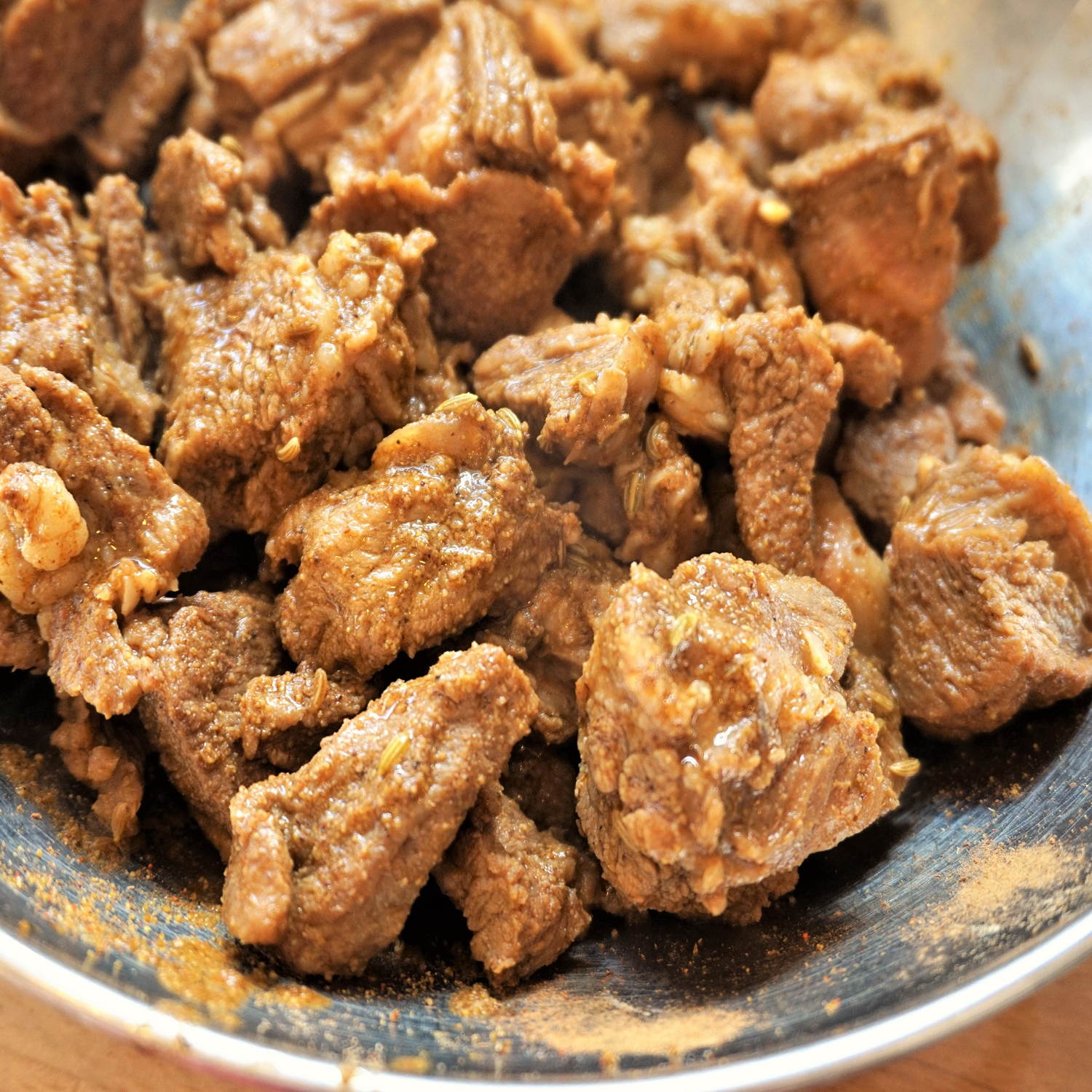
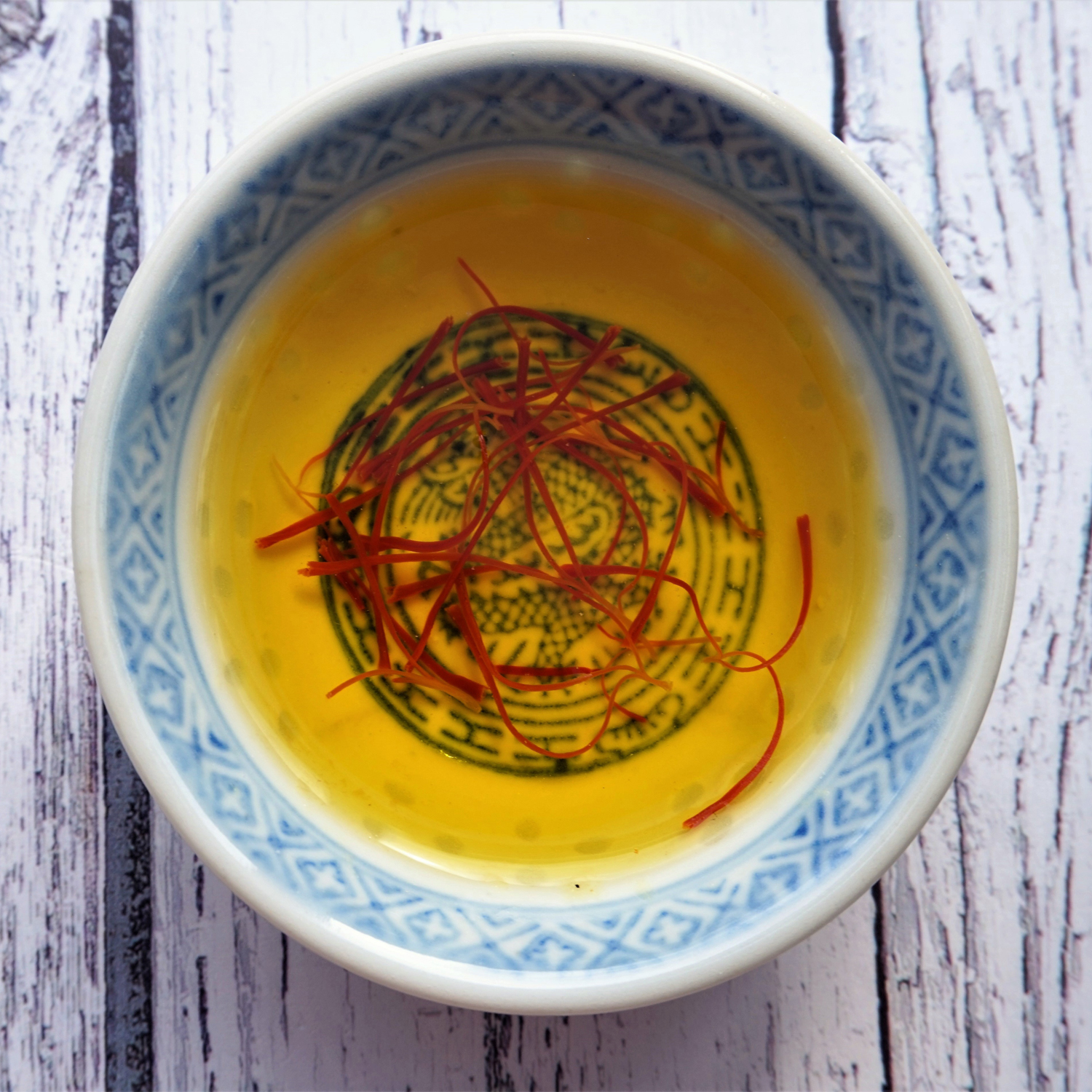
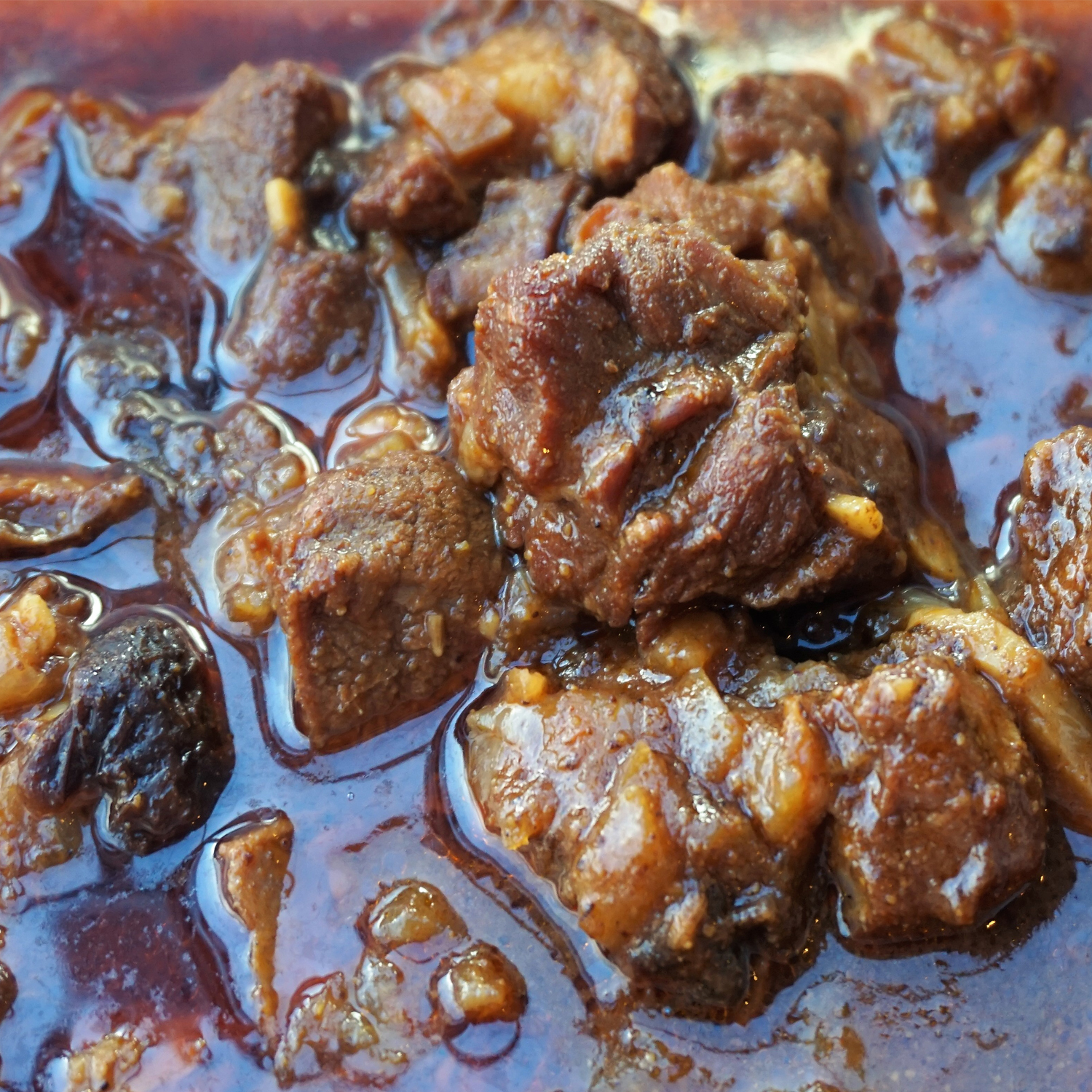
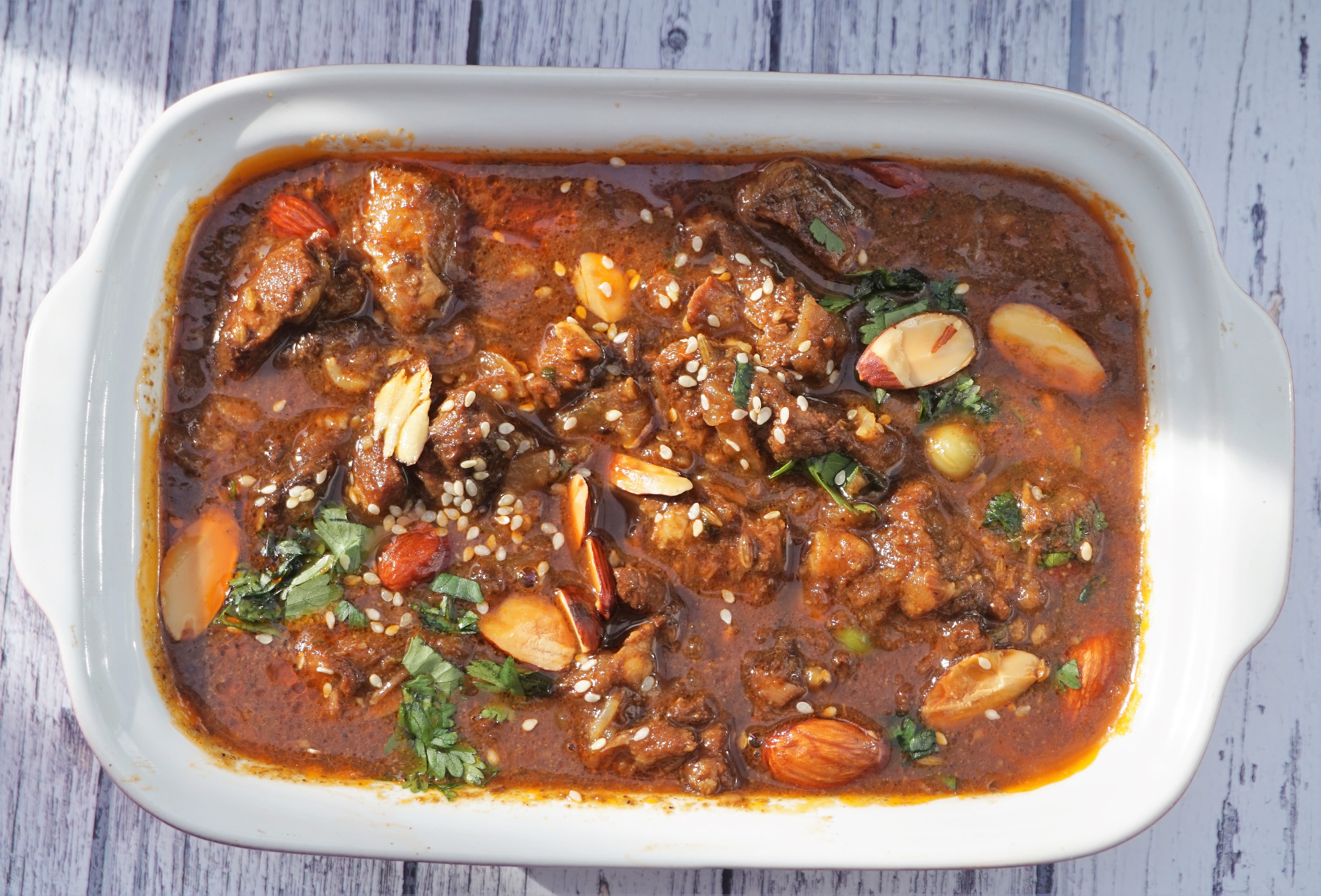
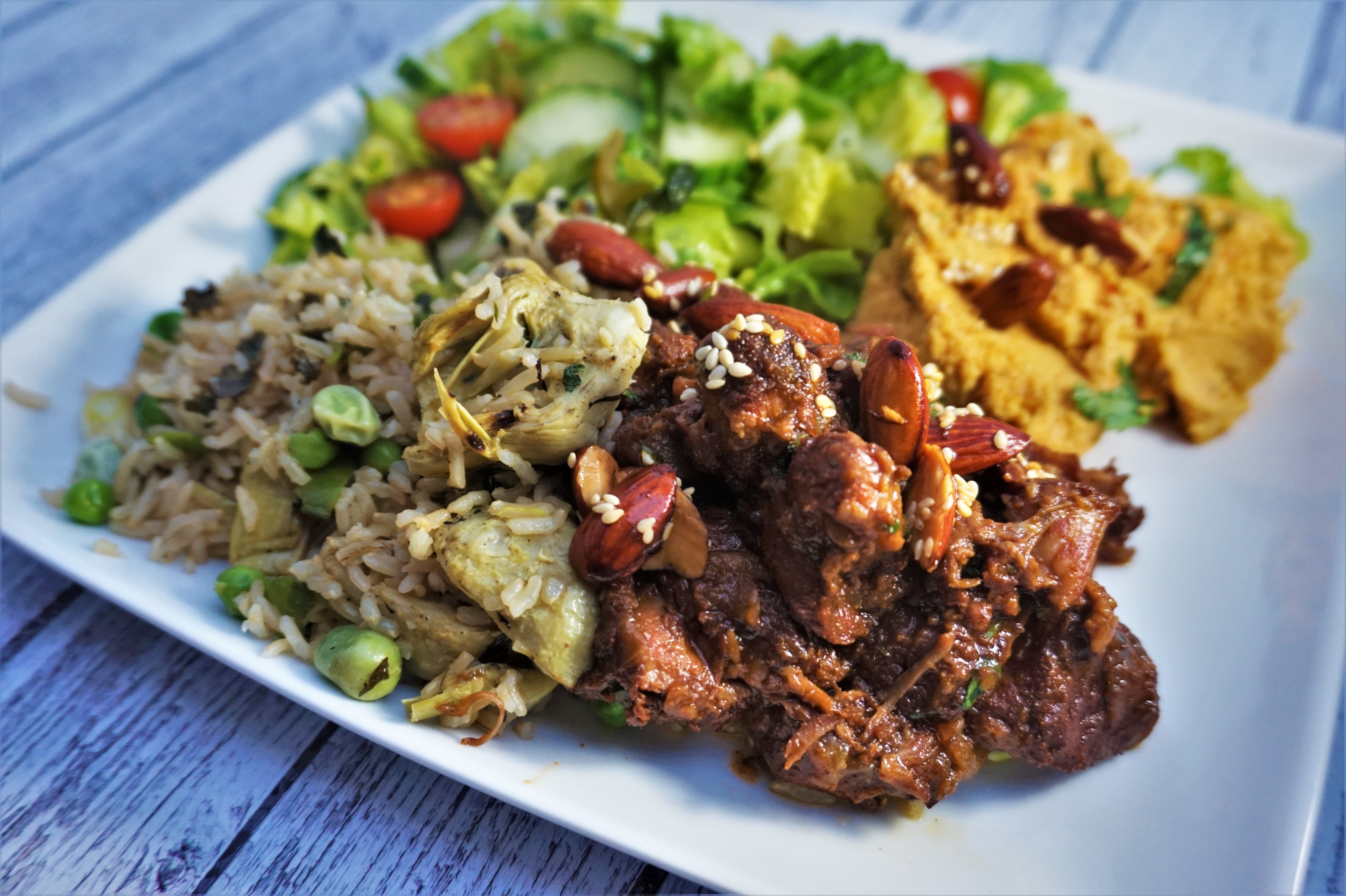
Easy to make and delicious. i’ll definitely be making it again.
Many thanks for the feedback, Liz. So glad you enjoyed recipe. I think it would be great if more people tried mutton and discovered how good it can be!